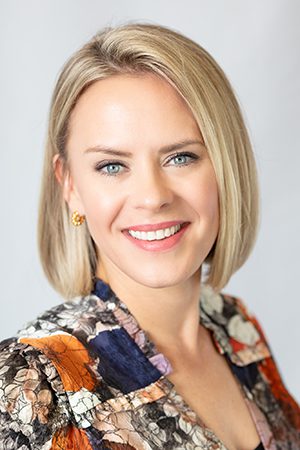
Last winter, Michelle Hayward sold her business, Bluedog Design, to me and its 50 employees by forming an employee stock ownership plan, or ESOP.
By way of background, I’m the chief executive officer for Bluedog, which is a design-led, business strategy and marketing consultancy. When Michelle chose the name Bluedog for our company, she avoided the typical play to put the owner’s name on the agency’s door. Instead, she gave employees a brand to buy into with no strings attached, making them feel part of a team. With the sale of Bluedog, Michelle’s aim, in part, was to preserve the award-winning, “we-centric” culture she helped build.
“People like the idea of being emotionally invested in their work, and a company can use an ESOP as a way to lift up employee voices and build a great culture,” says Kyla Alterman, communication consultant with our ESOP administrator, Blue Ridge ESOP Associates, who we invited to speak to Bluedog’s employees.
We were lucky that Bluedog already had a great culture where co-workers felt heard and respected by one another and valued by clients. But it took several years to arrive at the decision to create an ESOP and Michelle engaged in many conversations with various experts to ensure this was how she wanted to turn over control to a new generation of leaders. Before committing to becoming an ESOP, Michelle explored selling to a private equity firm or a competitor. Neither option, however, guaranteed the preservation of Bluedog’s legacy and culture.
By creating the ESOP, Michelle found a profitable way to exit a business that she had put many years of energy, investment, and care into. And Bluedog’s employees and I get ownership shares in the company that vest over time. The ESOP is a way for founders to transfer ownership to their employees.
For Bluedog, the ESOP is an official name in line with the accountability that we’ve always felt for our work. Even before the ESOP, any of us would likely say we had ownership over our careers and the decisions made on behalf of our clients. In fact, when I interviewed clients before we formed the ESOP, they would often share that Bluedog is special because we work on their business as if it were our own. Clients remark on how we roll up our sleeves and make them feel like we’re 100% on their team.
Choosing to become an ESOP and getting your employees on board is easier when you have a culture of accountability. Without engaged workers, I’m not sure employees would get excited about the ownership aspects and retirement benefits of an ESOP. And even with an engaged workforce, the structure of an ESOP can be confusing. Cogently communicating at regular intervals is a must; launching an ESOP is not something that leaders can announce at an all-hands meeting and then fade into the background or ignore. It’s a new day, a new reality with the possibility of a brighter future for all.
Since publicly announcing the ESOP, we gather once a month with our employees, whom we now call owners, to continue to educate ourselves and develop a robust ownership mindset. To further foster this growth, we recently established an Owners Academy where we host experts, like Kyla Alterman and others, who highlight the benefits of ESOPs and talk about their experience with and recommendations for employee ownership.
“If an employee is with an ESOP company long-term, they could leave with hundreds of thousands of dollars or more,” Alterman says. “The structure leads to a real benefit.”
Alterman notes that if workers take out their ESOP money before they reach 59.5 years of age, they can roll over the funds into a 401(K) without penalty. According to Corey Rosen, founder of the National Center for Employee Ownership, “. . . the typical ESOP company contributes about 6 percent to 10 percent of pay per year into the employee’s account each year.”
The appeal of an ESOP for Michelle was offering wealth creation to the many versus consolidating wealth with the shareholders of a holding company or with a few elite investors. Experts say, on average, an ESOP has a three- to seven-fold greater payout for an employee than 401(K) investments. Despite the monetary benefits, discussing the upside for something that might be ten years away can be a tough sell, especially for younger workers. But since people at Bluedog now know they are owners, there is added interest, and that comes to life in big and small ways–from deeper involvement in our business growth to referring to each other as “owners”.
Every founder and company’s situation differs, which necessitates exploring whether an ESOP is a good fit. Financial advisers and specialized legal counsel can help a founder formulate a strategy and organizations like the National Center for Employee Ownership and the ESOP Association can offer advice and studies to support the decision.
“I don’t think there’s a real con to a founder choosing an ESOP over any other type of exit,” Alterman adds.
For Michelle and our employees, creating an ESOP was the only way to ensure our clients and the future of our carefully cultivated culture would remain in our hands.

Shannon Murphy is the chief executive officer of Bluedog Design, a marketing and growth consultancy focused on shaping better decisions with its clients. Bluedog is a certified B Corp, women-owned business (WBENC) and Employee Owned (ESOP). She is also the board president of Meals On Wheels Chicago.



